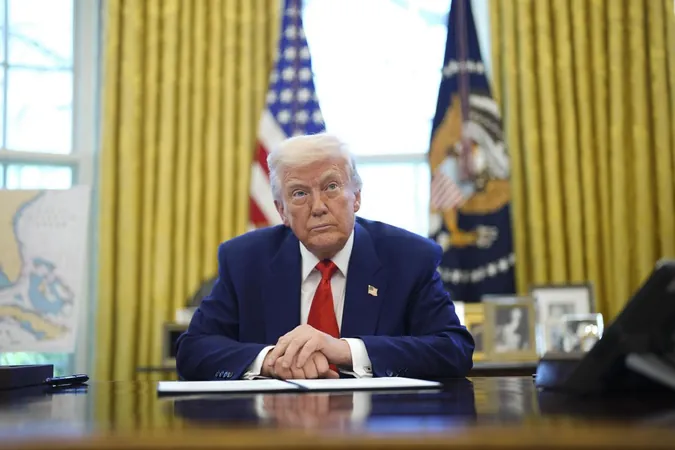
Trump's Tariff Rollercoaster: What You Need to Know About the Recent Pause
2025-04-09
Author: Nur
In a surprising turn of events, President Donald Trump has put a temporary halt on his proposed tariffs that were threatening to shake the U.S. economy to its core. Just hours after they went into effect, and amidst a chaotic stock market plunge, Trump’s announcement on April 9 sent shockwaves through global financial circles.
What Tariffs Did Trump Just Hit the Brakes On?
The President declared a 90-day pause on what his administration referred to as 'reciprocal tariffs' affecting imports from nearly 60 nations and the European Union. Initially, these tariffs were tailored for each trading partner based on their trade surplus with the U.S. Now, these imports will instead face a standard 10% duty that Trump had already imposed on goods from all foreign countries as of April 5. Notably, China, which also faced these tariffs, was excluded from the pause, with Trump instead raising tariffs on Chinese goods to a staggering 125%.
Why the Sudden Change of Heart?
The implementation of these reciprocal tariffs sent the markets into a frenzy, igniting fears of an economic downturn. Facing mounting pressure from business leaders and investors, Trump remarked that his critics were overreacting, saying, "They were getting a little bit yippy, a little bit afraid." His decision to pause the tariffs seems aimed at calming the storm.
What Happens Next?
The future remains uncertain as the 90-day pause approaches its end in early July. Will the tariffs be reinstituted, or will there be new negotiations? Trump hopes to use this window as leverage for countries to reduce their own tariffs and trade barriers. The stakes are high; if deals aren't struck, the tariffs imposed could return with a vengeance.
Impact on Canada and Mexico
Interestingly, America's closest trading partners, Canada and Mexico, were not part of the reciprocal tariffs. Instead, they face a hefty 25% tariff linked to issues surrounding illegal drugs and unauthorized immigration. However, imports covered under the North American Free Trade Agreement (NAFTA) are exempt.
Stock Market Reactions: A Sudden Surge!
Following the announcement of the tariff pause, stocks bounced back dramatically. The S&P 500 soared by an impressive 9.5%, marking its most significant single-day rise since the 2008 financial crisis. Oil prices also experienced a spike as fears of a global slowdown began to ease.
Are We On the Brink of a Recession?
Before the tariff pause, many analysts were growing concerned about the likelihood of a recession by 2025 due to the rising consumer unease and decreased business activity. However, the stock market’s unexpected rebound has led some, like Goldman Sachs, to reconsider their recession predictions. Still, significant uncertainties linger about Trump's next moves and their potential impact on economic stability.
Why Keep Targeting China?
China remains the main focus of Trump’s tariff strategy due to long-standing grievances over trade practices. Since his first term, he has sought to hold China accountable for issues ranging from trade surpluses to its alleged role in the U.S. opioid crisis through fentanyl exports. As the tension escalates, all eyes remain on the unfolding trade saga.
In the ever-evolving world of international trade and U.S. politics, one thing is clear: the twists and turns of Trump's tariff policies are far from over.



 Brasil (PT)
Brasil (PT)
 Canada (EN)
Canada (EN)
 Chile (ES)
Chile (ES)
 Česko (CS)
Česko (CS)
 대한민국 (KO)
대한민국 (KO)
 España (ES)
España (ES)
 France (FR)
France (FR)
 Hong Kong (EN)
Hong Kong (EN)
 Italia (IT)
Italia (IT)
 日本 (JA)
日本 (JA)
 Magyarország (HU)
Magyarország (HU)
 Norge (NO)
Norge (NO)
 Polska (PL)
Polska (PL)
 Schweiz (DE)
Schweiz (DE)
 Singapore (EN)
Singapore (EN)
 Sverige (SV)
Sverige (SV)
 Suomi (FI)
Suomi (FI)
 Türkiye (TR)
Türkiye (TR)
 الإمارات العربية المتحدة (AR)
الإمارات العربية المتحدة (AR)